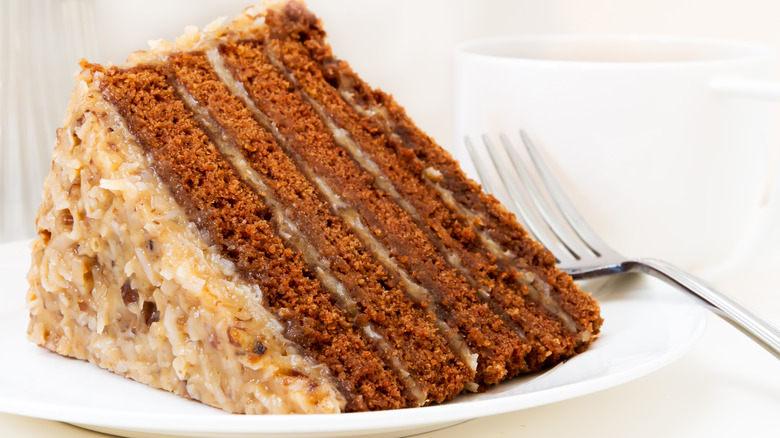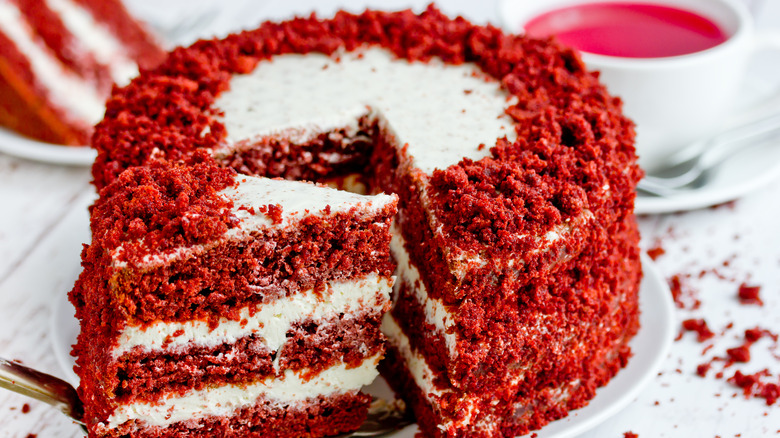The Real Difference Between German Chocolate Cake And Red Velvet
Unless you are a chocaholic or total baking enthusiast, you might not be aware that every chocolate cake is not the same. From devil's food to molten and flourless cakes and Black Forest to truffle cakes, there's tons of variety when it comes to shapes, textures, flavors, fillings, and frostings. One great example is seen in the differences between German chocolate and red velvet — which is also technically chocolate, thanks to the cocoa in the recipe. They couldn't look more distinct, but the nuances are more than skin deep. Other than the use of chocolate as a key flavor ingredient, the two desserts could not be more different.
To start, German chocolate cake is incredibly rich. Thanks to its sweet custard filling, as well as a hearty amount of coconut flakes and chopped pecans, this baked good is super decadent. Because of its name, some might think that the treat originated in Germany — but as Martha Stewart points out, this mouthwatering layer cake was actually invented by a man named Sam German, the same hero who gave the world baking chocolate, and then used his invention to create this masterpiece. In fact, this type of layer cake is distinct for using semi-sweet melted chocolate rather than cocoa powder for its flavor, adds Stewart. The earliest creations were actually called German's cakes but somewhere along the line the apostrophe (and the "s" it came with) disappeared, leaving us with the current branding.
Red velvet cakes have more subtleties than just the color
Red velvet cakes may not be as packed full of extras as their German chocolate counterparts — or even look very chocolatey — but they are equally crave-worthy in their own right. This type of dessert made its debut in the 1800s, when bakers attempted to make the proteins in flour softer using almond flour, cornstarch, or cocoa in order to have a more textured cake, according to Taste Cooking. In that time, cocoa powders were more acidic — as is the buttermilk often used in red velvet recipes today — which triggers a chemical reaction in the baking process, bringing out the red hues in cocoa and resulting in a cake that's smoother in mouth-feel. Martha Stewart adds that in the early days, before food coloring, beets were also incorporated to get that desired red tone.
In its discussion of the history of red velvet cakes, Oola says the introduction of food coloring in 1938 changed the game. At this time, when Congress passed legislation allowing food dyes to be used in edible items, a man named John A. Adams (chief marketing agent for the Adams Extract Company) thought it might be a good idea to use cakes as a way to promote the company's new line of food dyes. Because of this, red velvet cake remarkably changed colors, adjusting from a more mahogany shade to the brilliant red we know today — and the rest is cake history. The addition of cream cheese frosting at some point along the way also upped the appeal of red velvet cakes from delicious to the show-stopping desserts that they continue to be.

